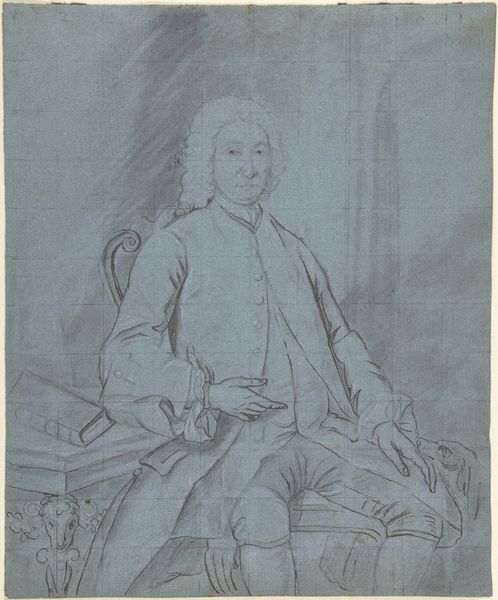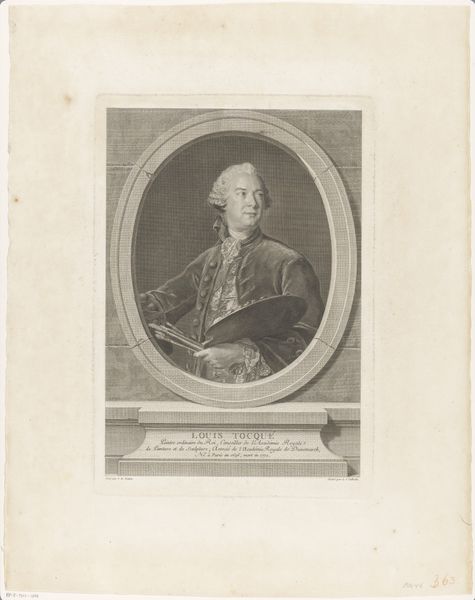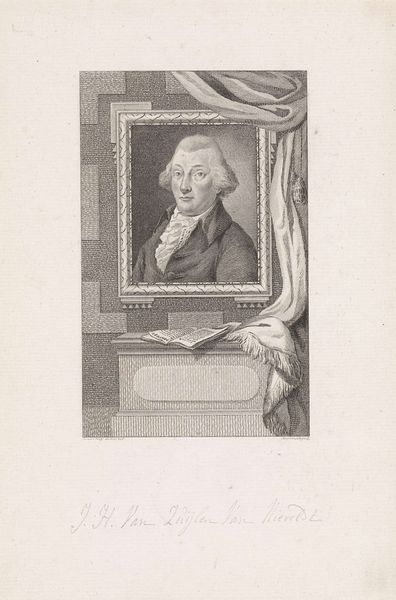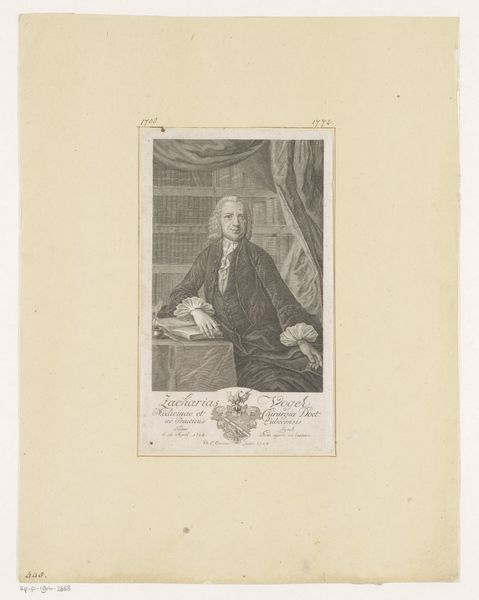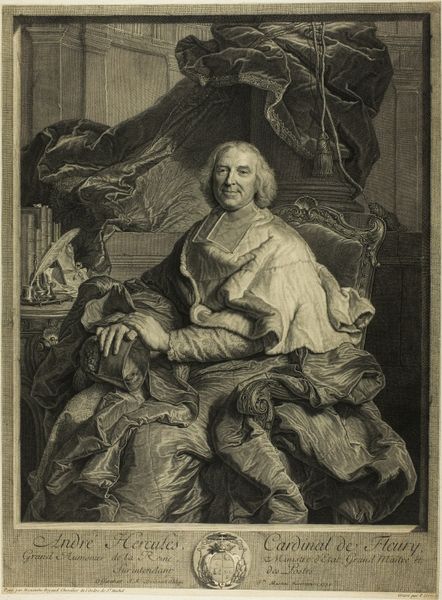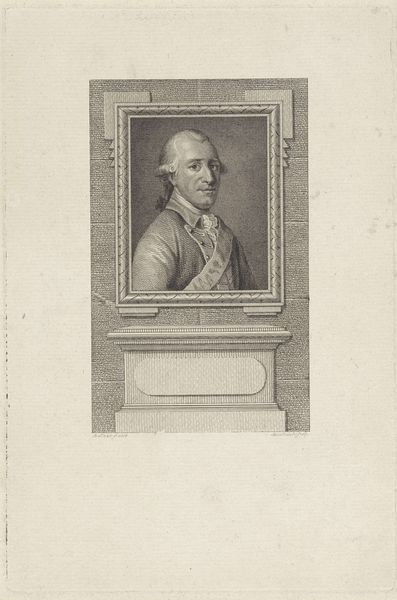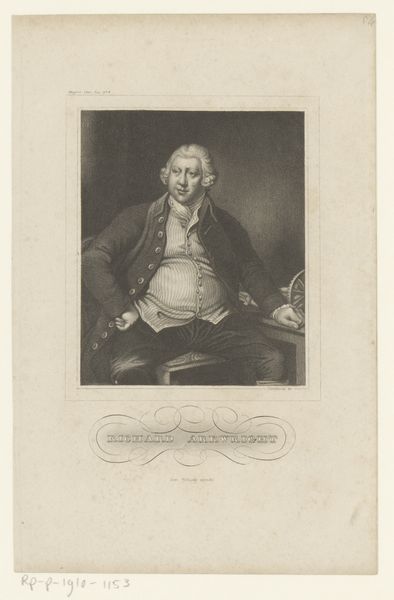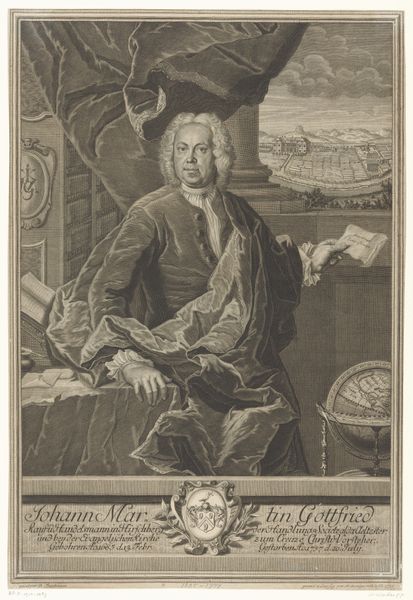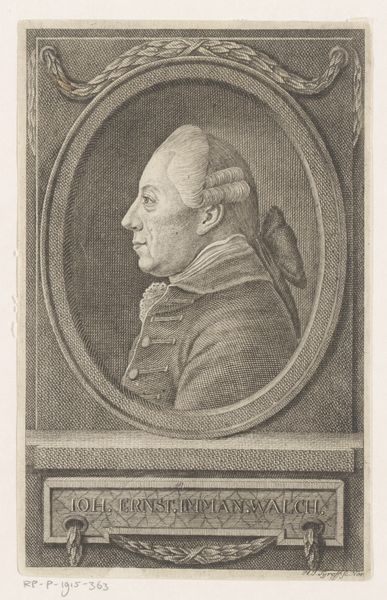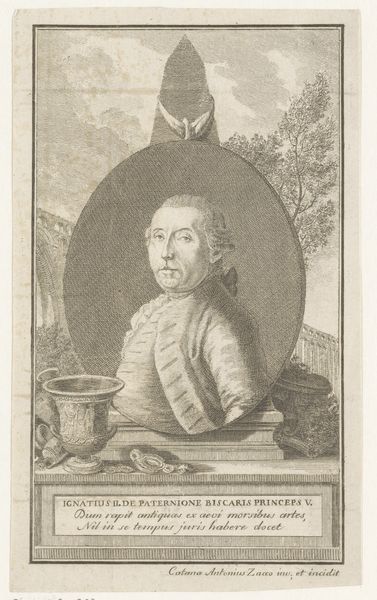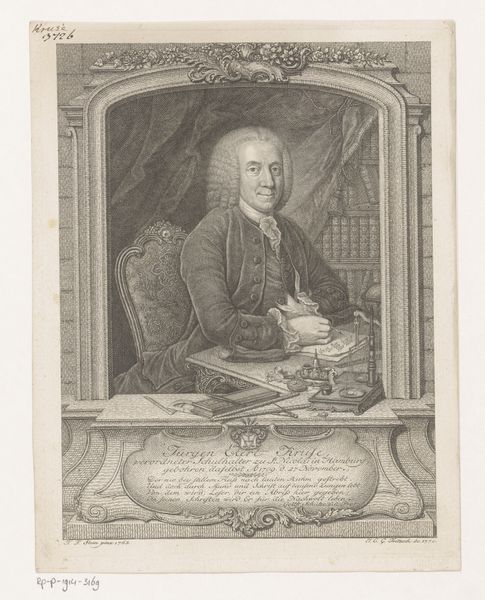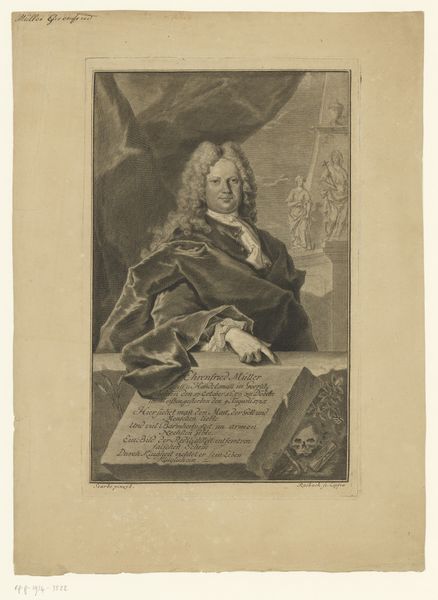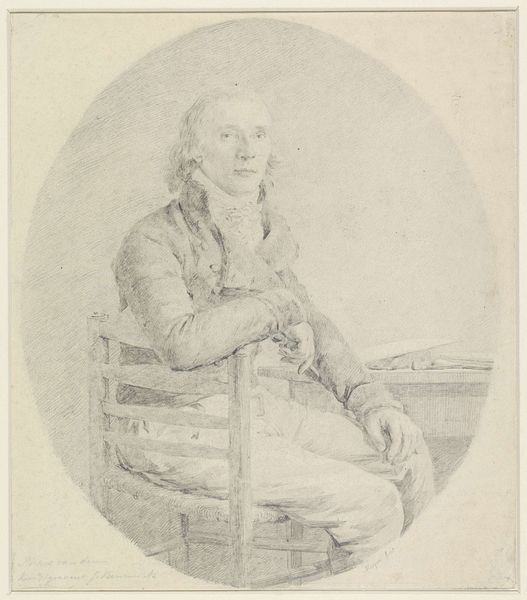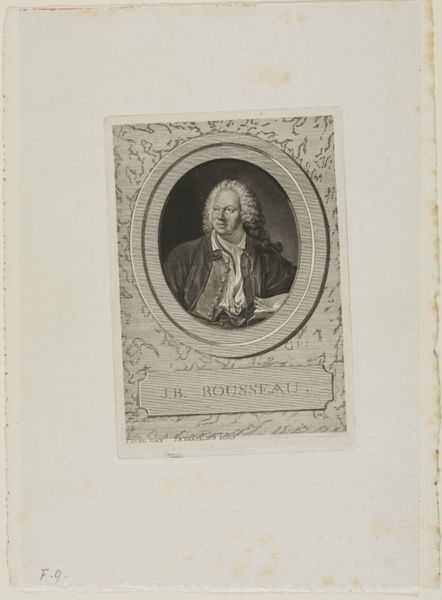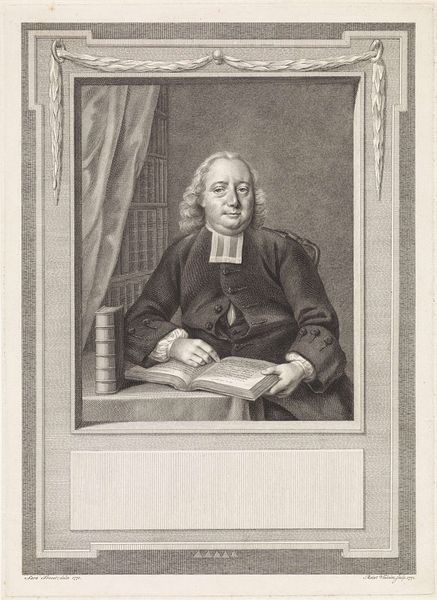
drawing, coloured-pencil, pencil
#
portrait
#
drawing
#
neoclacissism
#
coloured-pencil
#
pencil sketch
#
landscape
#
coloured pencil
#
pencil
#
15_18th-century
#
watercolour illustration
#
academic-art
#
watercolor
#
realism
Dimensions: height 450 mm, width 308 mm
Copyright: Rijks Museum: Open Domain
Curator: Let's discuss Johannes Zacharias Simon Prey’s "Portret van Gerard van Nijmegen," a colored-pencil drawing from 1786, currently held in the Rijksmuseum. Editor: My immediate impression is one of calm and self-possession. The subject’s posture, the soft, muted palette—it all speaks of a composed artistic spirit at work. Curator: Indeed. This piece reflects the rising social status of artists during the late 18th century. Portraits were becoming less about aristocratic patronage and more about celebrating individual achievement. Nijmegen here is not depicted in a grand, symbolic setting, but in his own studio, surrounded by the tools of his trade. It's a subtle form of self-promotion, tied to broader cultural shifts that validated artistic merit. Editor: You’re right, it’s carefully constructed. The triangular composition subtly frames his figure against the easel and landscape, giving a certain visual prominence. Notice, too, the textural contrast between the smooth skin tones achieved with the pencil and the coarser, almost grainy appearance of the canvas. It directs the viewer's gaze, highlighting his face as the center of artistry. Curator: And this drawing serves as a window into the artist’s own status. Academic art of the time heavily emphasized realism, aspiring toward accurate representation while integrating the sitter into refined environments. Prey seems keen to situate Nijmegen within the discourse of high culture, even including the bust for an almost direct allusion to the antique past. Editor: From a formal perspective, the artist also successfully employs light and shadow to define form without being overly dramatic, resulting in a gentle, accessible quality. The gaze that connects with the viewer… Curator: All for making the sitter approachable, and it worked, I imagine! But ultimately this is also a savvy piece of social positioning, presenting an artist in the Neoclassical era that values skill and refinement. Editor: Absolutely. Through its carefully arranged details, "Portret van Gerard van Nijmegen" provides a fascinating study of a person in the midst of his moment, and a movement as it reflects this vision of its members. Curator: Agreed. It’s a testament to art’s intersection with identity and ambition, framed by historical shifts. Thank you, always, for new dimensions, to explore artworks from.
Comments
No comments
Be the first to comment and join the conversation on the ultimate creative platform.
